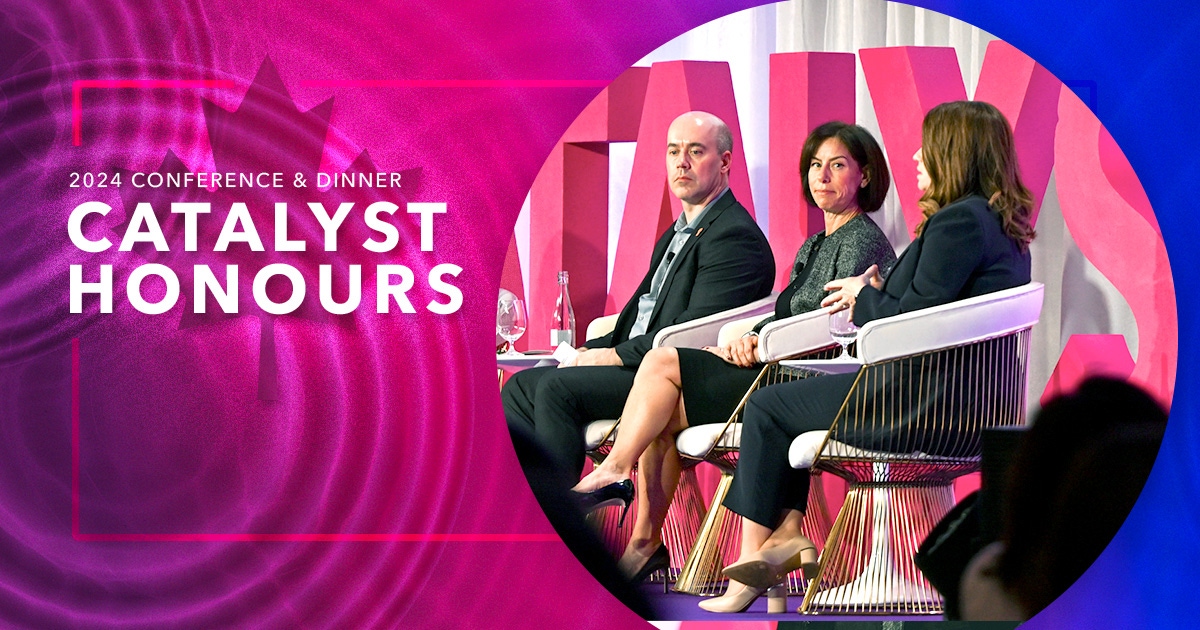Business leaders shaping the future of inclusion

As Canadian businesses navigate economic shifts and global challenges, the role of inclusive leadership has never been more critical. Leaders set the tone and have the most direct impact on employees’ experiences, with inclusive leaders accounting for 45% of employees’ experiences of inclusion.
Senior leaders have the power to use their position in the spotlight to set the tone for the entire organization; on the flip side, it’s very difficult to maintain an inclusive workplace, where all employees can thrive, without leaders who show the way.
So how can businesses and their leaders create a more inclusive workplace?
It starts at the top.
Creating inclusive cultures starts with leaders, and Canadian businesses have a unique opportunity to lead the world by example, particularly as the country continues to embrace immigration and multiculturalism as drivers of economic growth. Leaders who actively support mentorship and sponsorship help break down systemic barriers.
When Pamela Allen, now CEO, joined MD Financial Services, she noted that while roughly half of employees were women, nearly all of them worked at lower administrative levels. Rather than standing by, she was inspired to support their journey up the corporate ladder. She told her manager that she wanted to develop programs that promote women in leadership and portfolio management. Now, her senior leadership team is 50% women, and she is already looking to the next challenge: making sure the team reflects the diversity of the company’s client base. Allen wants to ensure that “others see that they want to work with us, and they want to aspire with us because we understand them.”
Above all, these leadership actions must be genuine. Employees can see past performative actions. Philippe LePage, Director of Mine Development, Potash Engineering, warns, “If you're just mouthing the words and then you're off doing something else entirely and not showing that support in your actions and your words and your demeanor, then that's going to reflect back. And they're going to see that it's not important to you.”
Incorporate inclusive practices into every business process
Inclusion isn’t just an HR initiative—it should be embedded into every part of a business’ operations from product design to safety equipment for all body types.
LePage says he likes to focus on the details that make a big difference in employees’ day-to-day work experiences. “It was even just the simplest things like … safety equipment: A pair of gloves that doesn't fit or coveralls that you have to take off to use the washroom,” he says. “So being able to make that difference and that change [can] create that inclusive workplace and that welcoming space.”
Jodie Wallis, Global Chief Analytics Officer at Manulife, says that Manulife factors diversity into “how we design insurance products, how we design health products, how we think about training and onboarding new agents, how we think about the tools that we give our agents, how we think about customer propositions.”
She explains that “if it's truly mission critical, if giving our employees the opportunity to express themselves, to be part of something, to make change, to … lead the grassroots movements, then it has to be in the same category as everything else that we do. That's mission critical to delivering the best value for our customers, delivering the best value for our shareholders.”
Sustain your progress
Building inclusive workplaces takes continuous effort and even when progress feels slow, organizations must stay committed.
“I think you just need to look and see the progress that has been made and see that there has been change,” says LePage. Specifically in the mining industry, “I've been working in it for … 28 years, and I have seen the slow shift. Is it as fast as we want it to be? No, it's not as fast as we want it to be, but I think there has been a shift.”
Inclusive workplace champions must remember that each industry and business moves at its own pace. Some sectors face deeper structural barriers. To understand where and how to make the most impact, leaders should regularly assess their workplace culture, listen to employees, and remember that even incremental progress is progress.
Wallis encourages leaders to find their purpose. “Being a pioneer in something is never easy. Being the first to pave that path is not easy,” she says, so “find your energy. What is the thing that gives you the energy to keep leaning in, to keep making progress? … Expect it to be different for everybody who's at your table but find yours, you know, dig into it and that'll give you the energy to keep going.”
Canadian businesses can continue to lead with intention by supporting their workplace champions and ensure that inclusive practices are being built into every part of their business strategy.
This conversation took place at the 2024 Catalyst Honours. Find out about the 2025 Catalyst Honours.